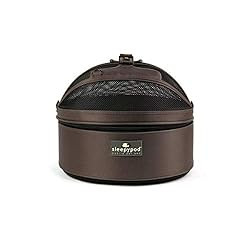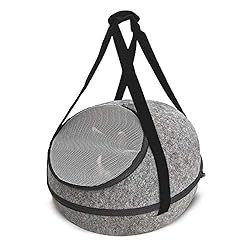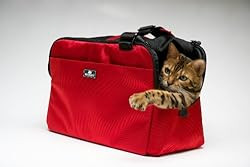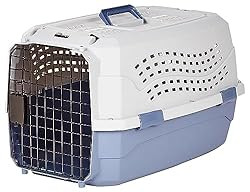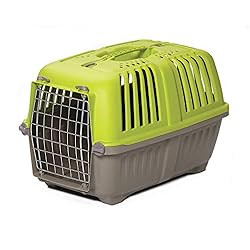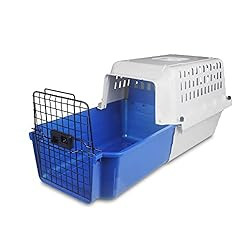Choosing the right cat carrier can feel overwhelming with so many options available. You see countless adorable carriers online and in pet stores, but are they truly the best for your feline friend? Specifically, when it comes to vet visits, what are the top cat carriers that prioritize your cat’s well-being?
If you search online for “Best Cat Carriers,” you’ll find numerous articles, often written by well-meaning individuals who aren’t veterinarians. While they may be cat enthusiasts, they lack the professional experience of seeing thousands of cats in carriers annually, especially in a veterinary setting.
As veterinarians, our role extends to education. As a veterinarian specializing in feline care, my professional focus is entirely on advocating for cats. When recommending a cat carrier, our primary objectives are twofold: 1) minimizing stress and 2) ensuring your cat’s safety. Aesthetics and style are secondary bonuses.
Does Every Cat Need a Special Carrier?
Interestingly, some cats are exceptionally relaxed travelers. You might bring them to the vet, open the carrier, and they calmly stroll out, perhaps even rolling onto their backs for attention. If this describes your cat, you’re fortunate! The type of carrier might be less critical for these laid-back felines. You have the freedom to select a carrier based on your and your cat’s preferences.
However, the reality is that many cats experience anxiety during vet visits. Our responsibility is to make these experiences as stress-free as possible.
Even if your cat appears quiet in their carrier, it’s wise to assume they are experiencing some level of nervousness. Consider the situation from their perspective: being unexpectedly picked up and placed in a confined space, then transported to an unfamiliar environment. It’s akin to an alien abduction for them! Wouldn’t you feel anxious?
In my feline-exclusive veterinary practice, we handle over 8,000 cat visits each year. That translates to examining over 8,000 carriers! I’ve encountered a vast array of carriers, and just when I think I’ve seen it all, a new design emerges.
Essential Qualities of the Best Cat Carriers for Vet Visits
The Number One Feature: An Easily Removable Top!
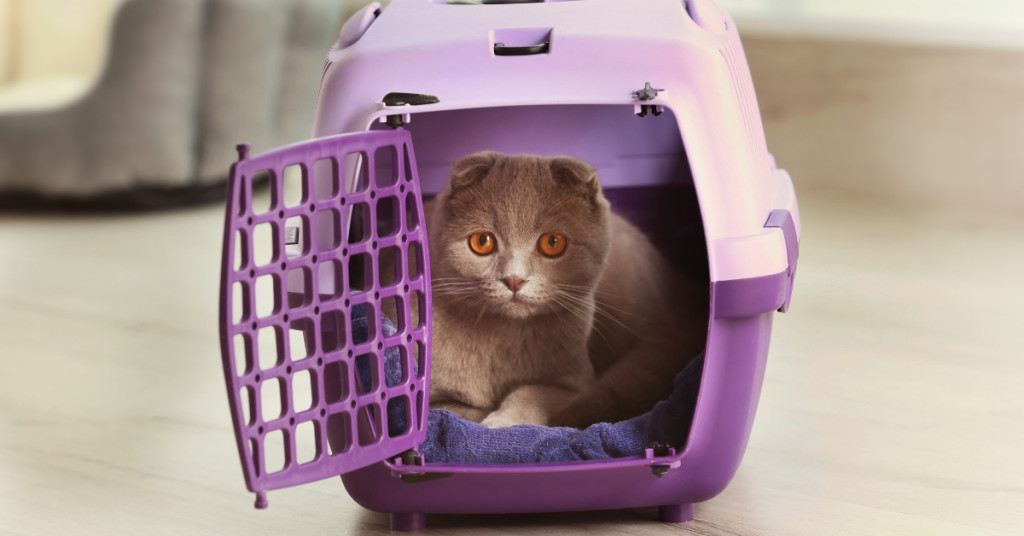 Cat comfortably sitting in a purple hard-sided cat carrier with a towel inside, demonstrating a best cat carrier for vet visits.
Cat comfortably sitting in a purple hard-sided cat carrier with a towel inside, demonstrating a best cat carrier for vet visits.
The most crucial feature of a good cat carrier is an easily removable top. This allows a cat who is fearful, anxious, or in pain to remain in the secure bottom half of the carrier if they choose. In our feline-friendly hospital and other cat-friendly practices, we often conduct examinations with the cat comfortably staying in the carrier base. Of course, if a cat feels comfortable enough to explore the exam room, that’s perfectly fine, but it should always be their choice.
“Easily removable” implies that the fasteners or attachments should be 1) rust-free and 2) simple to open. And please, no zip ties! Dealing with a fearful cat in a rusted, zip-tied carrier is incredibly challenging and adds unnecessary stress.
Carriers with removable tops are typically hard-sided carriers, although some exceptions exist (more on that below). These carriers are ideal for placing a soft towel or small cat bed inside, enhancing your cat’s comfort. Hard carriers are also advantageous for cleaning, especially if your cat urinates, defecates, or vomits during travel – accidents are much easier to manage in a hard carrier.
Consider the purple carrier pictured above. It features four user-friendly clips on the front and additional side clips. The cat inside has a comfortable towel. In a vet setting, I would first open the carrier door, giving the cat the option to come out. If they prefer to stay put, that’s perfectly acceptable! Then, I would gently remove the carrier top, offer a tempting treat, and proceed at the cat’s pace.
Cat Carrier Types to Avoid When Your Cat is Nervous
Soft Carriers: Convenient but Not Always Cat-Friendly
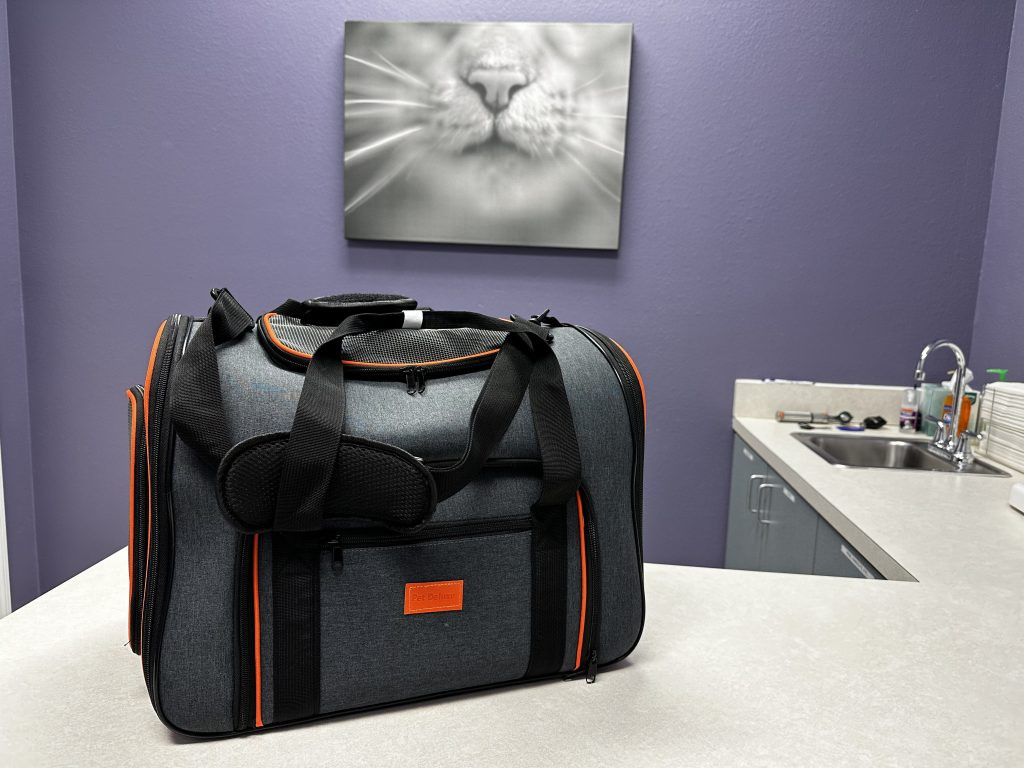 A stylish soft-sided cat carrier, illustrating a less ideal choice for nervous cats for vet visits.
A stylish soft-sided cat carrier, illustrating a less ideal choice for nervous cats for vet visits.
Soft carriers are often favored for their lightweight design and stylish appearance. While convenient for some situations, even soft-sided, top-entry carriers can be difficult to work with in a veterinary setting because the entire top is not removable, limiting accessibility. It becomes challenging to gently cover a nervous cat with a towel to provide a sense of security and then carefully examine them. Forcing or dumping a cat out of any carrier is something we always want to avoid.
Soft carriers are particularly problematic when dealing with highly anxious cats who express their fear through aggression. These carriers can collapse easily, making it difficult to safely and calmly remove the cat without escalating their distress. Furthermore, cleaning up accidents like urine, feces, or vomit is considerably more challenging with soft carriers due to their absorbent fabric construction.
The pictured soft carrier might be aesthetically pleasing, but consider the scenario: a severely frightened cat, hissing and screaming, whose owners were unable to administer a prescribed oral sedative. In such cases, an injectable sedative might be necessary for a safe and thorough examination. The small top opening of many soft carriers makes accessing the cat in such situations extremely difficult.
Soft carriers can be suitable for travel to locations other than the vet, provided 1) your cat seems relaxed inside, and 2) you are prepared for potential accidents. I previously owned a Sherpa carrier that worked well for my relaxed cat, Jack, for non-vet trips.
Backpack Carriers: Limited Space and Exposure
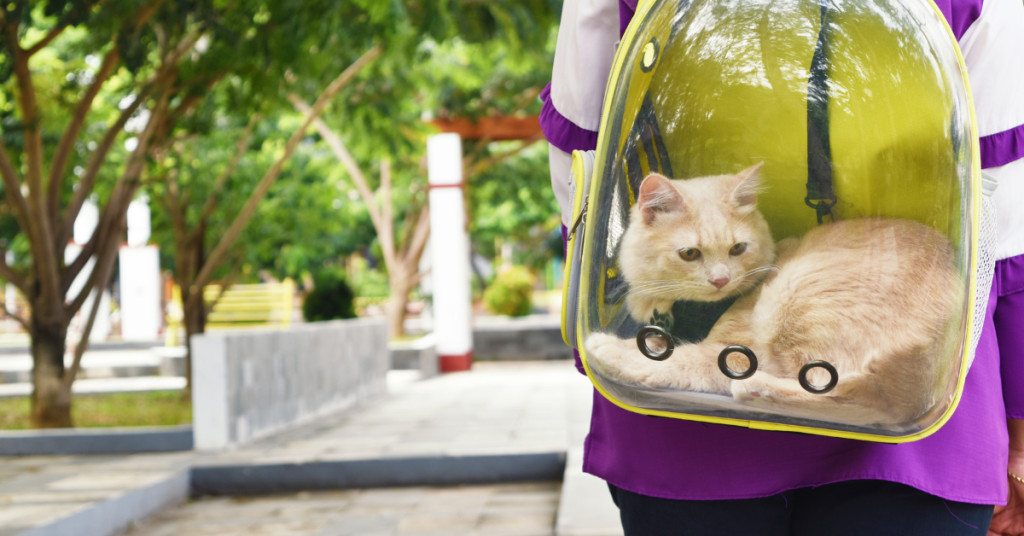 A cat in a backpack carrier with a clear window, demonstrating a less suitable carrier type for vet visits.
A cat in a backpack carrier with a clear window, demonstrating a less suitable carrier type for vet visits.
Backpack carriers often lack adequate space for cats to comfortably move and turn around. Many designs also feature a clear plastic window in the back. While this allows others to see your “cute” cat, it can be terrifying for the cat inside. Cats naturally seek enclosed, secure spaces for safety and comfort.
Backpack carriers are essentially the opposite of this preference. Despite their popularity and appealing aesthetics, they are generally not the best cat carrier choice for vet visits. However, there are exceptions. For individuals living in urban environments where walking is the primary mode of transportation, a backpack carrier might be the most practical option. In such cases, opt for a backpack carrier without a completely clear window to provide your cat with more privacy and reduce visual stress.
Vet-Recommended Cat Carriers: Top Picks and Why They Work
*FTC Disclosure: Please note that this article contains affiliate links. If you make a purchase through these links, I may receive a small commission at no extra cost to you. I only recommend products I genuinely believe in. I am an affiliate for Amazon and other online retailers. As an Amazon Associate, I earn from qualifying purchases.*
This carrier represents the pinnacle of luxury for cat carriers. It has a semi-rigid structure and, importantly, a removable top secured by a zipper. The base functions as a comfortable cat bed, which you can leave out at home to familiarize your cat with the carrier and create positive associations. The main image at the beginning of this article features my red Sleepypod. My black cat, Biscuit, is inside, though difficult to see due to her dark fur. One of the significant advantages of the Sleepypod is the ease of placing a cat inside. You simply place them in the “bed” portion and then zip the top section over them. While not a fully hard-sided carrier, I recommend lining it with pee pads to manage any accidents. If accidents occur, the Sleepypod has two washable internal layers. For urine that penetrates the carrier itself, thorough soaking with an odor remover is recommended.
The SPOT – 3-in-1 Sleep & Go Cat Carrier by Doc & Phoebe’s
Similar in concept to the Sleepypod, the SPOT carrier offers a slightly different style and a more accessible price point. It features an easily removable top and a secondary window for accessing your cat. Cats often appreciate having the window removed, transforming the carrier into a cozy “hiding hut.” The Doc & Phoebe’s brand was founded by Dr. Liz Bales, a veterinarian and fellow cat advocate who understands feline needs. Her brand also offers environmental enrichment products that encourage natural feline behaviors like hunting. For additional “hiding” options, explore my review of the Cattasaurus Cat Cave!
The Sleepypod Atom (A Soft Carrier Exception!)
As you might notice, I’m a Sleepypod enthusiast. While I generally advise against soft carriers for nervous cats, the Sleepypod Atom is a notable exception. Observe how the top unzips completely from left to right. Although the top isn’t fully removable, the extensive zipper opening allows for sufficient access to examine a cat comfortably. The interior remains soft, so consider using pee pads for cats prone to accidents. These carriers are airline-approved and are my top recommendation for air travel. They are also aesthetically pleasing. For larger cats, the Sleepypod Air is a slightly larger version suitable for cats up to 18 pounds.
Amazon Basics 2-Door Top Load Pet Carrier – The Essential Choice
This carrier is incredibly popular among my patients. It’s an excellent, practical choice that meets all my key recommendations: easily removable top, hard-sided construction, ample size for cat movement, and good ventilation. It also features a top entry door, providing an alternative way to place your cat inside without removing the entire top. I wholeheartedly approve of this carrier.
MidWest Homes for Pets Spree Travel Carrier – Compact and Effective
For those seeking a smaller yet functional carrier, the MidWest Homes carrier is an excellent option. A patient recently arrived at my clinic in this carrier, and I was so impressed that I took a picture to look it up later. This carrier is lightweight and straightforward. Assembly is remarkably easy, requiring only six tabs on the front – no side or rear clips needed. It comes in various sizes. This carrier proved ideal for keeping my patient comfortably contained for her examination. The top removed swiftly and easily. Check out the product link for a video demonstrating its simple assembly.
Van Ness Calm Carrier – A Unique, Cat-Considerate Design
The Van Ness Calm Carrier features a unique back-sliding door. This design is perfect for accessing your cat while they remain in the secure base, allowing you to gently drape a towel or blanket over their head for added security. While getting your cat into this carrier initially might still pose a challenge, sliding the top closed may be less stressful for some cats. It has a secure door and is easy to clean.
Catit Cabrio Cat Carrier – The Stylish and Functional Option
If you’re looking for a carrier with a “cool” factor, the Catit Cabrio is it. The top splits in half and opens to the sides, providing excellent access. The integrated handle is sturdy and eliminates concerns about breakage. It also has seat belt slots for secure car travel, ample ventilation, and is easy to open. No screws mean no rust or lost parts. As a bonus, it includes small integrated food and water dishes. I’ve trusted the Catit brand for years, starting with their excellent cat fountains. I genuinely can’t find any drawbacks to this carrier – it’s simply excellent.
This list represents my curated selection of top cat carriers. While other good options exist, these are carriers I confidently recommend. Ultimately, the best cat carrier is one that prioritizes your cat’s comfort and safety. Evaluate your current carrier from your cat’s perspective.
The AAFP (American Association of Feline Practitioners) offers a valuable handout titled “Visiting your Veterinarian: Getting your Cat to the Veterinary Practice.” This resource provides helpful tips on carrier training to reduce your cat’s stress levels. Consult with your veterinarian for personalized advice and to discuss potential calming supplements or medications that can further improve your cat’s veterinary experience.
As a feline veterinarian, I’ve seen cats transported in everything from Amazon boxes to beach bags. Ultimately, choose a carrier that works effectively for you, your cat, and your veterinarian, ensuring stress-free and safe travels.
What type of cat carrier do you currently use, and what do you appreciate most about it? Share your experiences in the comments below!

